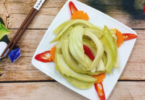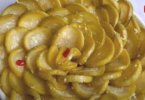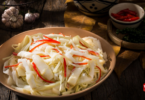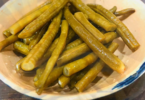Vietnamese Pickled Shallots (Dua Hanh Tim) – A Crunchy Symbol of Tet Tradition
In Vietnamese food , there’s one small but mighty condiment that shows up every Tet holiday and brings balance to rich dishes: Vietnamese pickled shallots, or dua hanh tim. Tangy, crunchy, and lightly pungent, this traditional pickle is a must-have alongside pork belly, boiled chicken, or sticky rice cakes. In this guide, we’ll show you how to make it at home easily using basic ingredients, while honoring the flavors and culture of Vietnamese cuisine.
What Is Vietnamese Pickled Shallots (Dua Hanh Tim)?
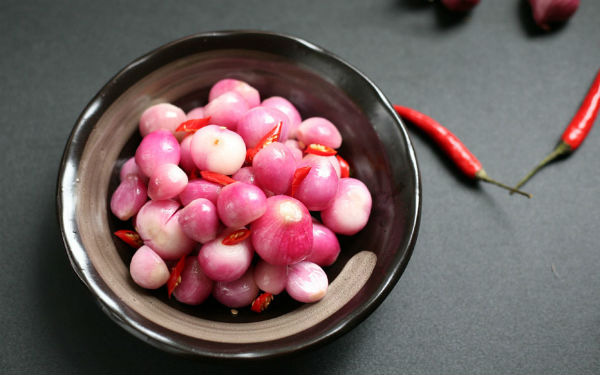
Vietnamese pickled shallots, or Dua Hanh Tim, is a traditional side dish often served during Tet (Lunar New Year) and family feasts in Vietnam. Made from small purple shallots that are lightly fermented in a mixture of salt, sugar, vinegar, and water, dua hanh tim has a tangy, slightly sweet flavor with a crisp texture and mild pungency. It is not only delicious but also symbolic—associated with good manners and respectful behavior in Vietnamese culture. Often eaten alongside rich dishes like braised pork belly, sticky rice cakes, or boiled chicken, this humble condiment helps cleanse the palate, balance flavors, and bring a festive touch to every meal.
Ingredients
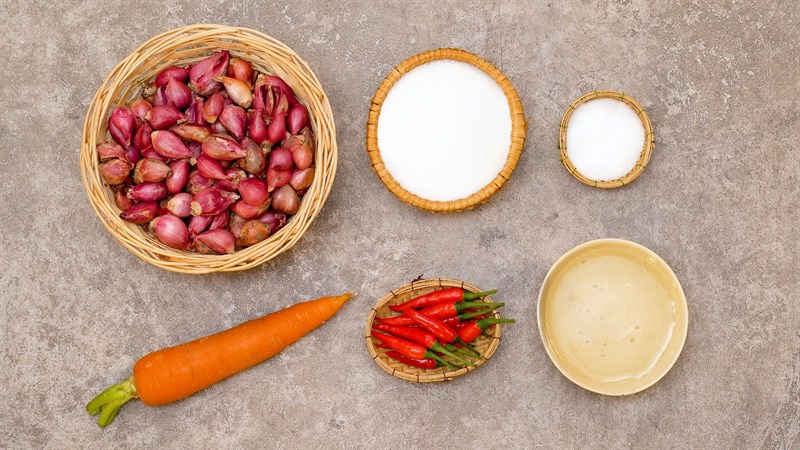
- 500g small purple shallots
- 1.5 tablespoons salt
- 2 tablespoons sugar
- 200ml rice vinegar or white vinegar
- 300ml warm filtered water
- 1–2 red chili peppers
- 2 garlic cloves
Step-by-Step Process – How to Make Vietnamese Pickled Shallots
Step 1: Select and Prep the Shallots

- Choose 500g of small, firm purple shallots with tight, shiny skins.
- Soak the shallots in warm water for about 10–15 minutes to loosen the skins and make peeling easier.
- Peel off the outer layers carefully. Try not to cut off the root or tip unless needed—this helps maintain shape during pickling.
Step 2: Reduce Sharpness by Soaking

- Once peeled, soak the shallots in a saltwater solution (mix 1.5 tablespoons of salt in enough water to cover the shallots).
- Let them sit for 2–3 hours or overnight. This step helps mellow their strong bite and keeps them crisp.
- After soaking, rinse the shallots with clean water and let them air dry completely on a tray or paper towel for at least 30–60 minutes.
Step 3: Prepare the Pickling Brine

- In a clean bowl, mix:
- 200ml rice vinegar
- 300ml warm filtered water
- 2 tablespoons sugar
- Stir until the sugar fully dissolves.
- 200ml rice vinegar
- Taste the brine: it should be slightly tangy, sweet, and lightly salty.
- Let the brine cool to room temperature before using—it should never be hot when poured over the shallots.
Step 4: Pack the Jar

- Place the dried shallots into a sterilized glass jar.
- Add optional slices of red chili and garlic between the layers for aroma and flavor.
- Pour the cooled brine into the jar until the shallots are completely submerged.
- Seal the jar tightly.
Step 5: Ferment and Store

- Leave the jar at room temperature (away from direct sunlight) for 2–3 days to allow mild fermentation.
- Once the shallots become slightly translucent and tangy, move the jar to the refrigerator.
- The flavor will continue to develop but stay crisp and fresh.
Common Mistakes and How to Fix Them
1. Shallots Become Slimy or Soft
Cause:
- Not drying the shallots properly after soaking
- Using hot brine instead of room temperature
- Brine not salty or acidic enough
Solution:
- Always air-dry shallots thoroughly before pickling
- Let the brine cool completely before pouring over the shallots
- Increase the vinegar and salt slightly for better preservation
2. Brine Turns Cloudy or Has Bad Smell
Cause:
- Contamination from dirty jars or utensils
- Too much moisture left in the shallots
- Over-fermentation in warm environments
Solution:
- Use sterilized glass jars and clean utensils
- Keep shallots fully submerged to avoid spoilage
- Transfer to the refrigerator after 2–3 days of room temperature fermentation
3. Shallots Don’t Pickle Evenly
Cause:
- Brine doesn’t fully cover all the shallots
- Uneven sizes or inconsistent slicing
Solution:
- Use a glass weight or place a clean leaf of banana or cabbage on top to keep shallots submerged
- Select shallots of similar size, or trim larger ones to match
4. Color Fades or Looks Dull
Cause:
- Using very old or sun-exposed shallots
- Brine is too diluted
Solution:
- Use fresh purple shallots with deep color
- Keep the jar in a cool, dark place during fermentation
- You can also add a few slices of red beet or purple cabbage to enhance color naturally
5. Jar Leaks or Bubbles Over
Cause:
- Overfilled jar or over-fermentation
- Temperature too warm during fermentation
Solution:
- Leave about 1 inch of space at the top of the jar for expansion
- Loosely seal the lid during the first day or two, then tighten when refrigerating
- Keep the jar in a cool corner, not near heat sources

Conclusion
Vietnamese pickled shallots (Dua Hanh Tim) may be simple, but they carry deep cultural meaning. They’re crisp, slightly spicy, and wonderfully tangy—just enough to cut through the richness of traditional Vietnamese holiday dishes like braised pork, boiled chicken, or sticky rice cakes. But more than that, they represent balance, politeness, and family unity in Vietnamese tradition.
Ready to try your hand at this timeless Vietnamese pickle? Gather a few simple ingredients and make dua hanh tim today—it’s easy, quick, and rewarding. Share your creations with us by tagging #VNIFood on social media.

| Prep Time | 15 minutes |
| Servings |
people
|
- 500 g purple shallots
- 1.5 tablespoons Salt
- 2 tablespoons Sugar
- 200 ml rice vinegar
- 300 ml Water
- 1-2 red chili peppers
- 2 cloves garlic
Ingredients
|

|
- Select and Prep the Shallots Choose 500g of small, firm purple shallots with tight, shiny skins. Soak the shallots in warm water for about 10–15 minutes to loosen the skins and make peeling easier. Peel off the outer layers carefully. Try not to cut off the root or tip unless needed—this helps maintain shape during pickling.
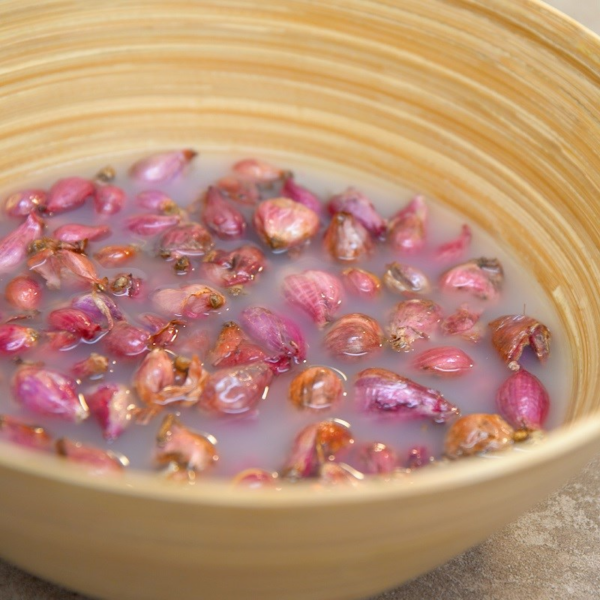
- Reduce Sharpness by Soaking Once peeled, soak the shallots in a saltwater solution (mix 1.5 tablespoons of salt in enough water to cover the shallots). Let them sit for 2–3 hours or overnight. This step helps mellow their strong bite and keeps them crisp. After soaking, rinse the shallots with clean water and let them air dry completely on a tray or paper towel for at least 30–60 minutes.
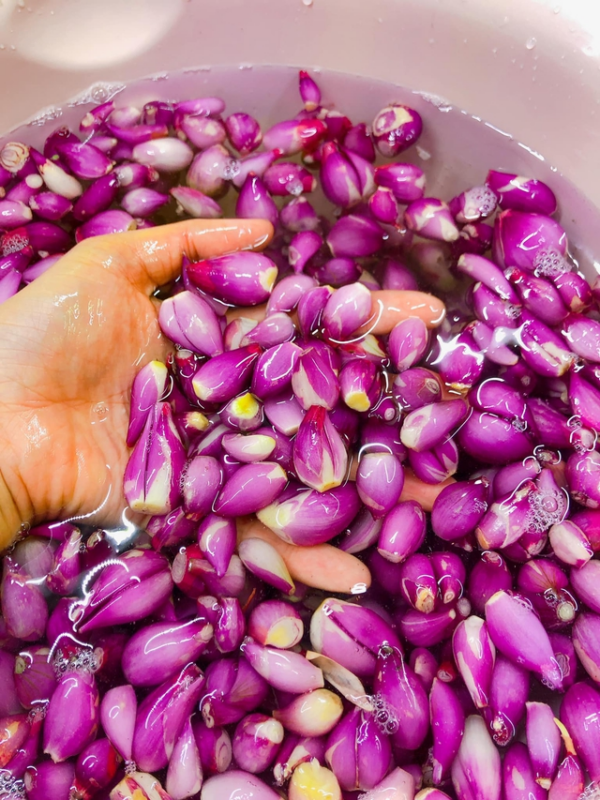
- Prepare the Pickling Brine In a clean bowl, mix: 200ml rice vinegar 300ml warm filtered water 2 tablespoons sugar Stir until the sugar fully dissolves. Taste the brine: it should be slightly tangy, sweet, and lightly salty. Let the brine cool to room temperature before using—it should never be hot when poured over the shallots.
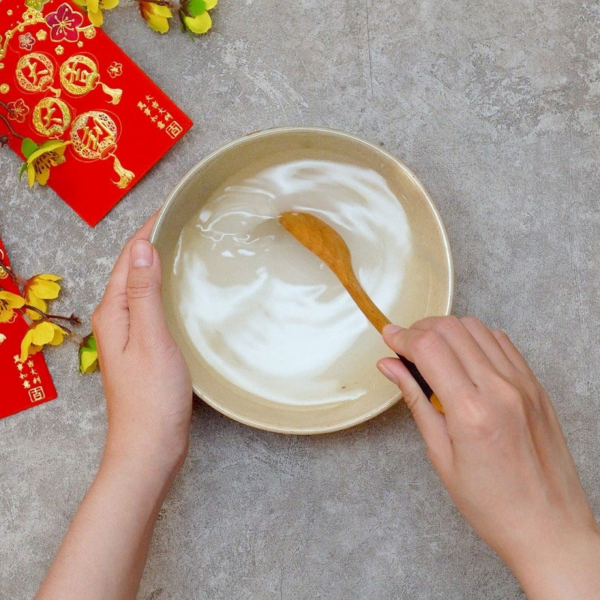
- Pack the Jar Place the dried shallots into a sterilized glass jar. Add optional slices of red chili and garlic between the layers for aroma and flavor. Pour the cooled brine into the jar until the shallots are completely submerged. Seal the jar tightly.
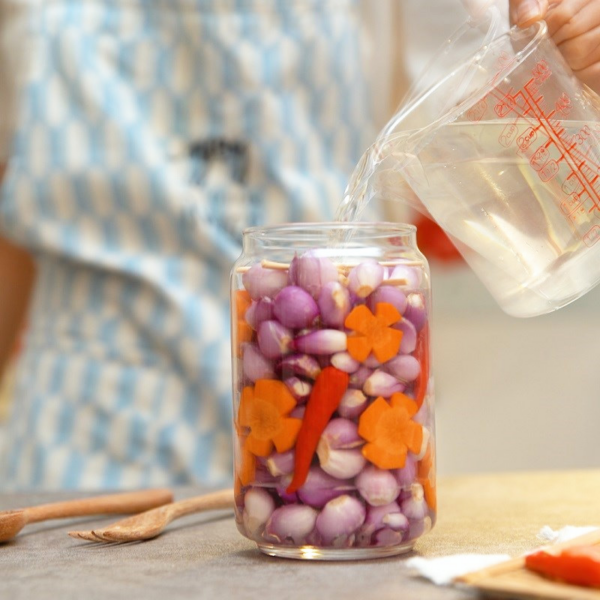
- Ferment and Store Leave the jar at room temperature (away from direct sunlight) for 2–3 days to allow mild fermentation. Once the shallots become slightly translucent and tangy, move the jar to the refrigerator. The flavor will continue to develop but stay crisp and fresh.





